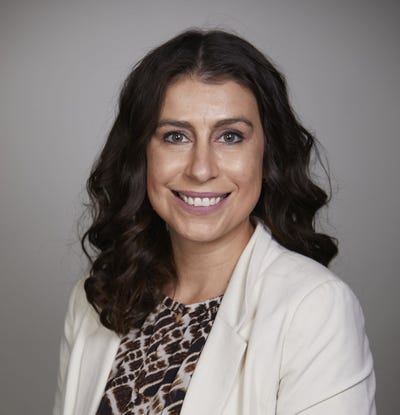Sandy Almendarez offers 5 omega-3 takeaways from GOED Exchange 2024
The omega-3 industry is facing challenges due to limited fish oil supply and consumer confusion about the benefits of omega-3s. However, plant- and algae-based alternatives and product personalization are innovating to meet consumer needs.

At a Glance
- The omega-3 industry faces limited fish oil supply due to factors like El Niño events and increasing aquaculture needs.
- Plant-based and algae-based alternatives are offering viable solutions for diversifying omega-3 sources beyond fish oil.
- Consumers lack understanding of "omega-3s" as an independent health benefit compared to "fish oil."
“The omega-3 industry is a family.”
That was explicitly stated and tacitly felt at GOED Exchange last month in Athens, Greece. In addition to hugs, the biannual event hosted by the Global Organization for EPA and DHA Omega-3s (GOED) offered plenty of compelling content.
Thus, I offer my top five takeaways of the GOED Exchange, all showing the omega-3 industry is collaboratively facing challenges with innovation and inspiration.
1. Fish oil sourcing will right-size to previous levels, but still, supply will be inadequate. (I gleaned this takeaway during the Supply Chain Roundtable session featuring the experts below).
2023 was a challenge for Peruvian and U.S. menhaden supply. According to Enrico Bachis, market research director of IFFO - The Marine Ingredients Organisation, the supply should recover to normal levels by mid-2024. That is, until the next El Niño event in the next three to four years. Even with levels recovered in 2024, supply is not anticipated to meet demand in the coming years. By 2050, the world will need to increase its food production by 50% of its current levels, said Panos Kalogiorgas, manager of strategy consulting with Deloitte. Current fish oil reserves don’t offer that type of supply.
On top of that, the aquaculture need for omega-3 ingredients will also increase to feed the fish that feeds people, pointed out Gertjan de Koning, CEO of Veramaris. Currently, half of all seafood is farmed, and as the human population increases, the need for farmed fish — which “supplement” with DHA (docosahexaenoic acid) and EPA (eicopentaenoic acid) — will also increase.
The situation seems dire, but open markets are efficient, and the omega-3 industry will find a solution, as Ray Gosselin, EVP and COO of Pharmavite, quipped during the roundtable session. Among the solutions suggested by the panelists:
Brands using different fish that have lower levels of DHA and EPA. For instance, cod liver oil, a staple supplement for many across the globe, contains less DHA and EPA than anchovy, but it also offers other beneficial fatty acids.
More strategic uses of fish oil, such as concentrates or creating more efficient feed formulations.
Better management and operational systems to reduce waste.
Combinations of algae and fish oil and/or plant-based oils. Algae oil is an established source of DHA, and recent innovations feature strains that produce EPA as well.
Getting more countries certified for sustainable commercial fishing.
2. Plant- and algae-based omega-3s are establishing a strong foothold.
SupplySide’s sponsorship support of the GOED event gave me the opportunity to lead a lunch roundtable; although it wasn’t part of the official program, I presented data from Nutrition Business Journal (NBJ), coupled with SupplySide survey data and recent scientific research.
My key takeaways are the U.S. market for animal-based omega-3 oil is steady, and growth in the U.S. omega-3 market will come from plant- and algae-based omega-3s. (Note: algae is not a plant; it is in the kingdom Protista. That categorization was a hot topic among canola oil suppliers at the GOED Exchange.) However, according to polling data from SupplySide West 2023, the industry is concerned with the cost of and unfamiliar regulatory aspects of plants-based ingredients.
The main stage of GOED Exchange also gave a fair amount of attention to plant- and algae-based omega-3s. The top line is industry needs to reframe its thinking: Algae is not just for vegans anymore. And although the cost concerns were discussed, solutions that would satisfy industry or consumers are still lacking.
Koning explained that the scale-up of algae production that is expected to help meet demand won’t necessarily reduce costs. Algae and fish will be equal in price for suppliers and consumers, however, because the cost of fish oil will rise. He reminded the crowd that fish oil was once a byproduct — an upcycled ingredient — so its cost at the dawn of the industry was basically nothing. That, of course, is not the case anymore with the global fish-oil omega-3 market size forecast to surpass $5.9 billion by 2030, according to Facts & Factors.

The Parthenon in Athens, Greece, served as the backdrop for the Gala dinner during the GOED Exchange 2024, where attendees were celebrating the supplement category with a Greek name: “omegas.”
3. US consumers don’t understand ‘omega-3’ as an ingredient that provides health benefits.
Consumers understand “fish oil” is good for them, but such recognition doesn’t translate to “omega-3s.” That’s a problem for brands who are diversifying their supply chains to rely less on fish oil. Gosselin shared an anecdote from 2018, when Pharmavite brand Nature Made updated its label from “Fish Oil” to “Omega-3s.” The product’s sales volume plunged 24% in one year. Not surprisingly, the company reverted the product’s label to “Fish Oil.”
A part of the solution lies in an annual GOED-promoted “Global Omega-3 Day” on March 3 (get it, 03/03 “omega-3”/“omega-3”?). The 2023 edition of Global Omega-3 Day led to an all-time high of Google searches of “omega-3,” pointed out Ellen Schutt, managing director of GOED. So mark your calendars, natural products industry, and let’s help boost those numbers next month!
4. Personalization will be key to omega-3 (and greater supplement) industry growth.
As artificial intelligence (AI) becomes more engrained into our lives, consumers will experience the bliss of personalization, and they will expect that of their nutrition products too. Keynote speaker Steven Van Belleghem, co-founder and board member of nexxworks, painted the picture of a not-so-distant future when AI could be our personal assistants, providing advice on who to vote for, what to buy and how to live our lives.
AI is anticipated to tie our experiences into a seamless life of personalization. An example would be if Spotify could read your text messages and social media, analyze your sleep patterns and incorporate the weather to provide the music you’d appreciate in any exact moment.
How lovely, right?
For products to break through the AI algorithm and end up a suggestion, Belleghem noted branding becomes even more important than it is today. If a consumer asks about a specific brand, their personal AI assistant will tell them about it. But if that consumer asks about a category — omega-3s for example — brands will need to hope their product makes the cut.
Moving back to present time, recent research presented from Nlumn revealed that most consumers are ready now for personalized nutrition (57% of adults indicated such on a U.S. survey by the company). Nlumn CEO Josh Anthony noted the survey found consumers prefer being tested at home with the finger prick method. Interestingly, people who feel they already get enough omega-3s are the most likely to test their levels, suggesting brands can target their current consumers with personal nutrition tests.
5. Many countries — including most of the US — are still under the omega-3 threshold.
The Omega-3 Index indicates the amount of EPA and DHA content in the blood expressed as a percent of total identified fatty acids. Research shows optimal levels are 8% or greater. But, as you can guess, residents of most of the world have not attained that optimal level.
In the U.S., most of the population is between 4% and 6% omega-3 blood levels, according to the newly updated “omega-3 map” of global Omega-3 Index levels. GOED updated a previous 2015 version of the map in conjunction with the Fatty Acid Research Institute (FARI), and the research was presented at the GOED Exchange by researchers Jan Philipp Schuchardt and Philine Beinhorn from Hannover University, Germany.
In 2015, the average levels for the U.S. were less than 4%. So, perhaps omega-3 marketing is working. The research excludes Alaska from the rest of U.S. data, though, and that state is sitting pretty at over 8% omega-3 levels on average.
Countries that are not faring as well as the U.S. with under 4% on average include Brazil, India, Nigeria, Egypt, Saudi Arabia and Palestine. The researchers noted more work needs to be done to better hone the understanding of omega-3 levels around the world, as most available data incorporated into the map comes from North America and Europe.
Bonus fun fact of the GOED Exchange: Half of this year’s GOED Exchange attendees were there for the first time. The industry is growing, folks, and it looks like we may need more room at the metaphorical omega-3 dinner table. You know, to fit the growing “family.”
About the Author(s)
You May Also Like






.png?width=800&auto=webp&quality=80&disable=upscale)